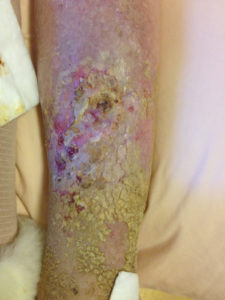Predicting non-healing venous leg ulcers
An article written by the Queensland University of Technology research team of Parker, Finlayson & Edwards and published in the November 2016 edition of the Journal of Wound Care, describes a range of clinical predictors for delayed healing in venous leg ulcers. The list of “predictors” include :
Large ulcer surface area, long ulcer duration, previous ulceration, lack of high compression, decreased mobility, poor nutrition, prior venous surgery, prior orthopaedic limb surgery (hip and knee replacements)and increased age.
The authors also reported on their investigations into the healing rates of those individuals who had a venous leg ulcer and who lived alone. Their study concludes that living alone and being socially isolated is in fact another “predictor” for delayed wound repair.



